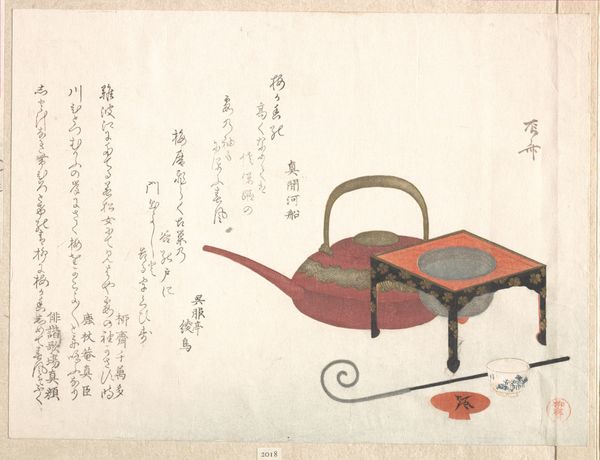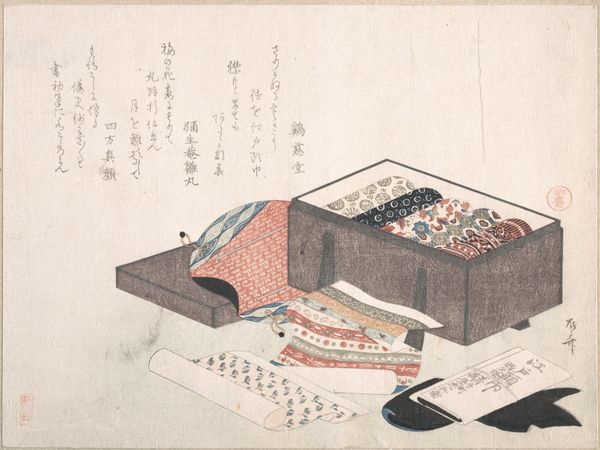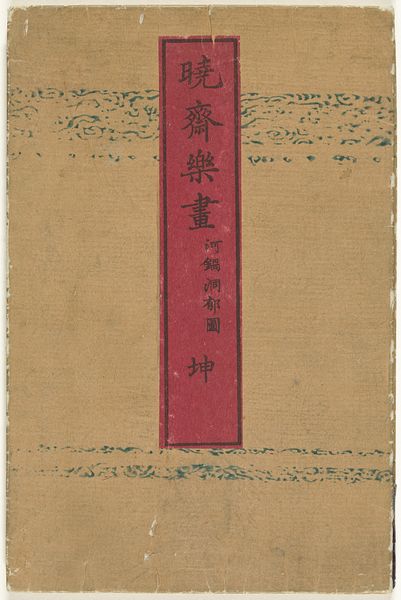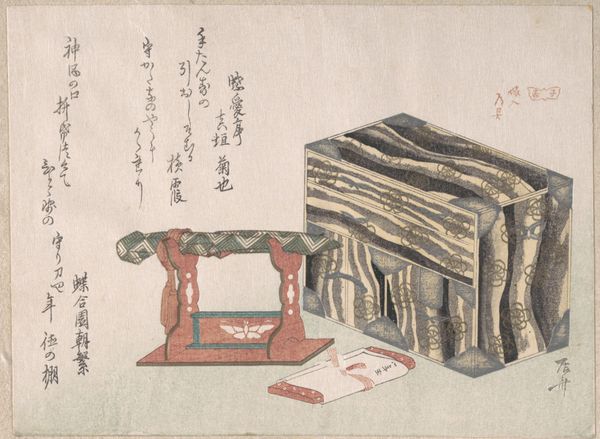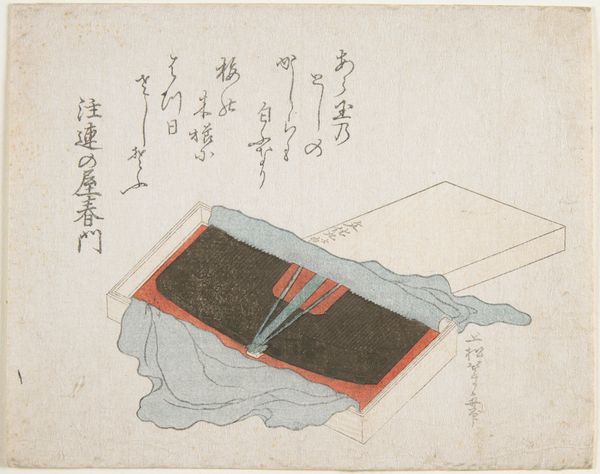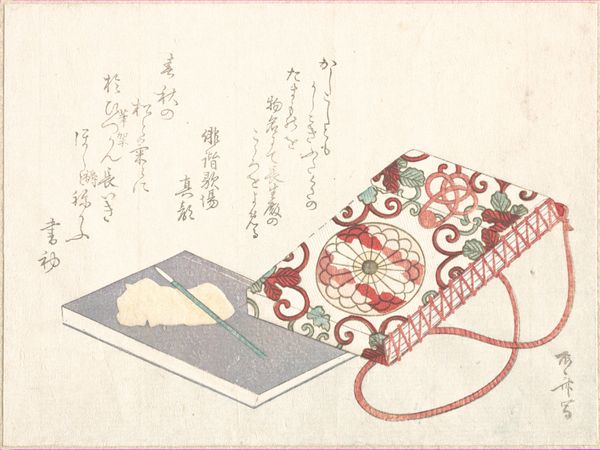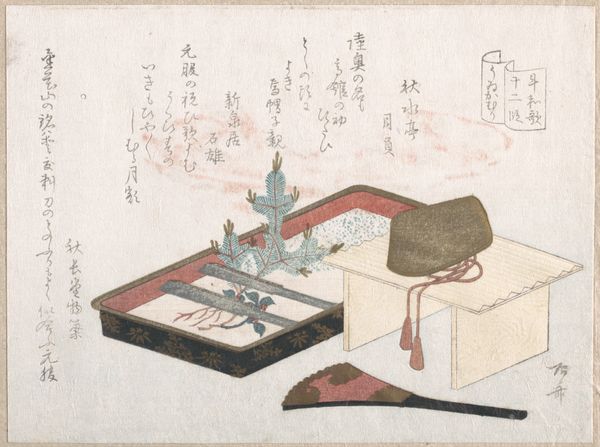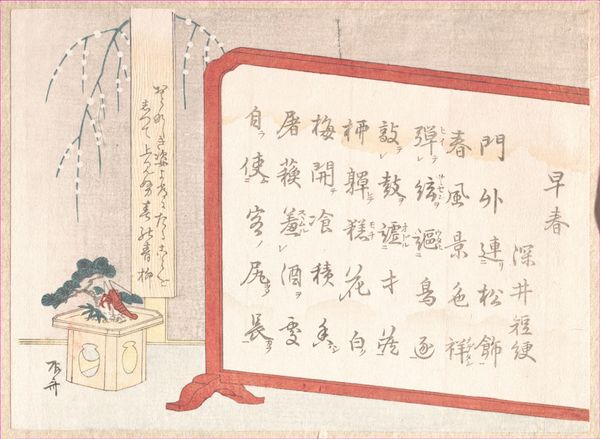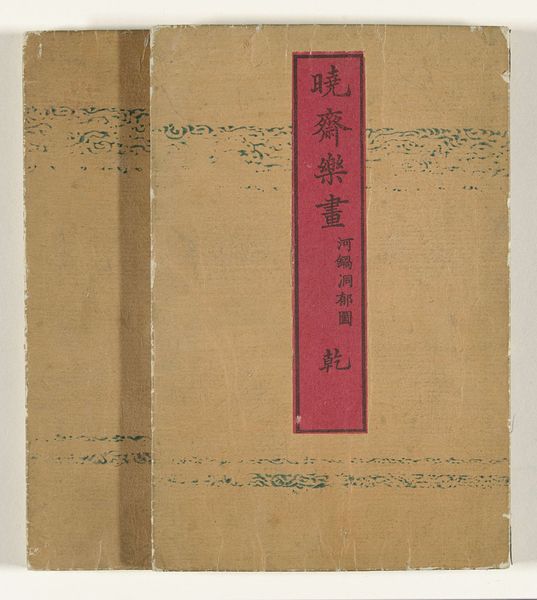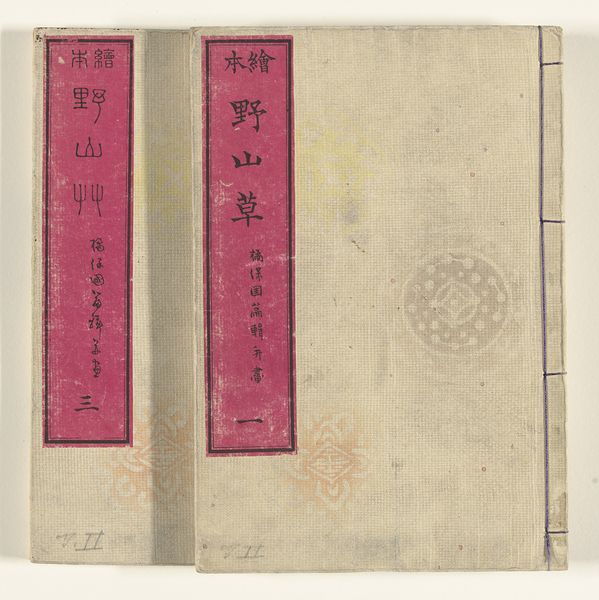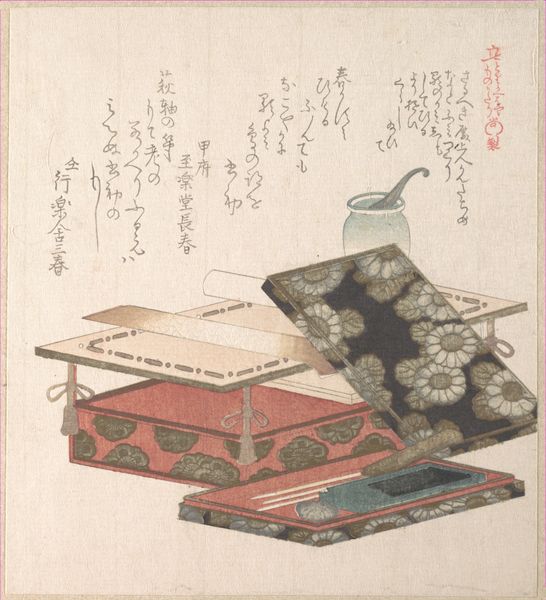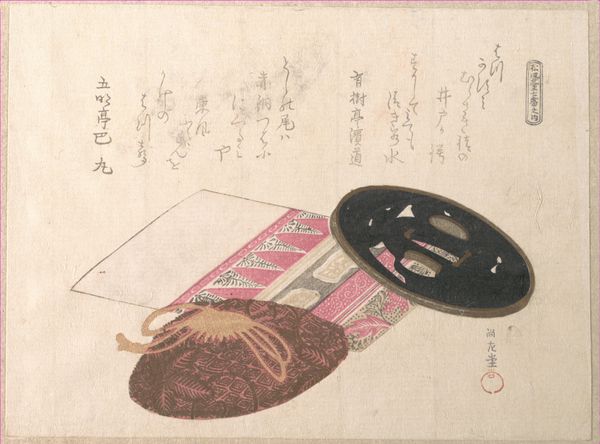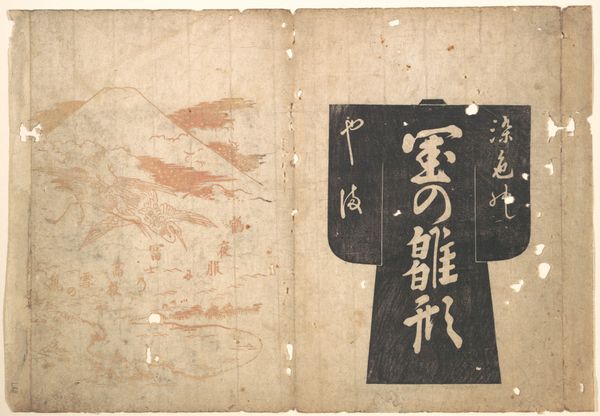
print, woodblock-print
# print
#
asian-art
#
ukiyo-e
#
woodblock-print
Dimensions: 5 9/16 x 7 7/16 in. (14.1 x 18.9 cm)
Copyright: Public Domain
Curator: This woodblock print, attributed to Kubo Shunman and dating back to the 19th century, is titled "Knife and Two Knife Handles." It's currently housed in the Metropolitan Museum of Art. The composition itself feels unexpectedly gentle. Editor: Yes, it is an interesting choice to dedicate an Ukiyo-e style woodblock print to weapons. The careful placement of the knife below the resting handles has an almost inviting aspect about it—it looks poised, balanced. Do you see any possible historical commentary behind this seemingly innocuous piece? Curator: Absolutely. Considering the sociopolitical context of 19th-century Japan, the presence of such imagery touches upon shifting power dynamics and the evolving role of the samurai class within the larger society. Moreover, blades held significant gendered associations, linking masculine identity to ideals of power and martial prowess. By depicting these objects, Shunman might have been critiquing—or perhaps, subtly, endorsing—certain societal hierarchies and norms. The presence of calligraphy further enriches it. Do you read anything there in terms of symbolism? Editor: It is tempting to suggest a correlation between its swooping shapes and the sharpness of the lower blade but I wouldn't want to presume. What strikes me, rather, is how flatly the print represents the knives; while there is no clear focal point, there is great tension along the knife and its case. Notice, too, the textural differences between the knife and the case holding the blade. The colors feel unexpectedly subdued given the cultural associations that might attend this type of image, as you stated. The red adds a splash of boldness, while the silver tone seems subdued. Curator: True. Shunman definitely plays with perceptions of the mundane. And given the Edo period’s fascination with both weaponry and aesthetics, it wouldn’t surprise me if the print offered dual reflections on privilege and the cost of it—violence. It prompts us to contemplate the value systems embedded within material culture. Editor: It has certainly sparked a conversation. I am more captivated by the composition, but I agree on the merit of social criticism.
Comments
No comments
Be the first to comment and join the conversation on the ultimate creative platform.
